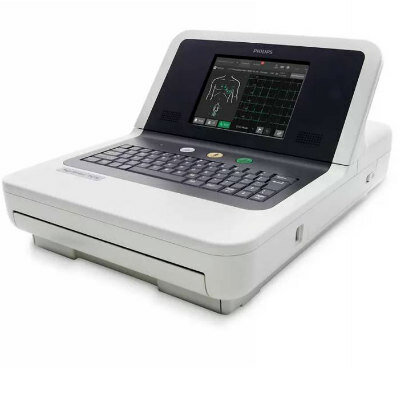Modern Design Helps Reinvent the Wheelchair 
|
By HospiMedica International staff writers Posted on 06 Oct 2014 |

Image: The Movi patient chair (Photo courtesy of Movi Medical).
A new concept in patient chairs intended for hospitals, nursing facilities, or home-bound seniors could replace the old-fashioned wheelchair.
Designed based on input from a team of experts assembled at the University of Alabama (UAB; Birmingham, USA), the Movi chair attempts to address eight key items, including increased maneuverability, low rolling resistance, minimizing patient falls, improving access into and out of the chair, minimizing staff injuries from assisting patients, and integrating medical equipment (such as IV poles or catheter bags), as a way to make the chair more efficient.
The result is a comfortable, ergonomically designed lift chair that rolls easily and can carry an array of medical equipment. The battery-powered motor can pivot on its axis to raise or lower a patient up to 20 degrees; when the chair is raised, the integrated footrest lies flat on the floor, making it much easier for a patient to get into or out of the chair, minimizing fall risk and the likelihood of injury to transport staff. The chair even contains a 170 liter hold for the patient’s belongings. The Movi chair is a product of Movi Medical (Birmingham, AL, USA).
“Every hospital around the world uses a conventional wheelchair that was developed as a self-propelled mobility device, and was never intended to be used in hospital applications,” said Movi designer Lloyd Cooper, of Movi Medical, a company created to design, build and market the new chair. “A wheelchair is one of the most compromised seating environments imaginable. It should be the reverse. Those who need a chair need the very best chair.”
“We’ve become more aware in recent years of the number of injuries to nurses and patient care technicians, as well as family members, from lifting patients,” said Cynthia Brown, MD, director of the UAB Division of Gerontology, Geriatrics, and Palliative Care and one of the consulting team for Movi. “We see back injuries and shoulder injuries, and have found that a whole segment of our workforce is at risk as they attempt to mobilize patients.”
Movi Medical also offers Movi 2, a second-generation chair, which is designed for the home and nursing facility market. It has additional creature comforts such as an adjustable headrest, fully padded arm supports, folding side table, extended leg rests, and side storage pockets. It is even available in custom colors and fabrics to match a home’s décor.
Related Links:
Movi Medical
Designed based on input from a team of experts assembled at the University of Alabama (UAB; Birmingham, USA), the Movi chair attempts to address eight key items, including increased maneuverability, low rolling resistance, minimizing patient falls, improving access into and out of the chair, minimizing staff injuries from assisting patients, and integrating medical equipment (such as IV poles or catheter bags), as a way to make the chair more efficient.
The result is a comfortable, ergonomically designed lift chair that rolls easily and can carry an array of medical equipment. The battery-powered motor can pivot on its axis to raise or lower a patient up to 20 degrees; when the chair is raised, the integrated footrest lies flat on the floor, making it much easier for a patient to get into or out of the chair, minimizing fall risk and the likelihood of injury to transport staff. The chair even contains a 170 liter hold for the patient’s belongings. The Movi chair is a product of Movi Medical (Birmingham, AL, USA).
“Every hospital around the world uses a conventional wheelchair that was developed as a self-propelled mobility device, and was never intended to be used in hospital applications,” said Movi designer Lloyd Cooper, of Movi Medical, a company created to design, build and market the new chair. “A wheelchair is one of the most compromised seating environments imaginable. It should be the reverse. Those who need a chair need the very best chair.”
“We’ve become more aware in recent years of the number of injuries to nurses and patient care technicians, as well as family members, from lifting patients,” said Cynthia Brown, MD, director of the UAB Division of Gerontology, Geriatrics, and Palliative Care and one of the consulting team for Movi. “We see back injuries and shoulder injuries, and have found that a whole segment of our workforce is at risk as they attempt to mobilize patients.”
Movi Medical also offers Movi 2, a second-generation chair, which is designed for the home and nursing facility market. It has additional creature comforts such as an adjustable headrest, fully padded arm supports, folding side table, extended leg rests, and side storage pockets. It is even available in custom colors and fabrics to match a home’s décor.
Related Links:
Movi Medical
Latest Patient Care News
- Surgical Capacity Optimization Solution Helps Hospitals Boost OR Utilization

- Game-Changing Innovation in Surgical Instrument Sterilization Significantly Improves OR Throughput
- Next Gen ICU Bed to Help Address Complex Critical Care Needs
- Groundbreaking AI-Powered UV-C Disinfection Technology Redefines Infection Control Landscape
- Clean Hospitals Can Reduce Antibiotic Resistance, Save Lives
- Smart Hospital Beds Improve Accuracy of Medical Diagnosis
- New Fast Endoscope Drying System Improves Productivity and Traceability
- World’s First Automated Endoscope Cleaner Fights Antimicrobial Resistance
- Portable High-Capacity Digital Stretcher Scales Provide Precision Weighing for Patients in ER
- Portable Clinical Scale with Remote Indicator Allows for Flexible Patient Weighing Use
- Innovative and Highly Customizable Medical Carts Offer Unlimited Configuration Possibilities
- Biomolecular Wound Healing Film Adheres to Sensitive Tissue and Releases Active Ingredients
- Wearable Health Tech Could Measure Gases Released From Skin to Monitor Metabolic Diseases
- Wearable Cardioverter Defibrillator System Protects Patients at Risk of Sudden Cardiac Arrest
- World's First AI-Ready Infrasound Stethoscope Listens to Bodily Sounds Not Audible to Human Ear
- POC Diagnostic Platform Offers Handheld, Instrument-Free PCR Testing for STIs
Channels
Artificial Intelligence
view channel
AI-Powered Algorithm to Revolutionize Detection of Atrial Fibrillation
Atrial fibrillation (AFib), a condition characterized by an irregular and often rapid heart rate, is linked to increased risks of stroke and heart failure. This is because the irregular heartbeat in AFib... Read more
AI Diagnostic Tool Accurately Detects Valvular Disorders Often Missed by Doctors
Doctors generally use stethoscopes to listen for the characteristic lub-dub sounds made by heart valves opening and closing. They also listen for less prominent sounds that indicate problems with these valves.... Read moreCritical Care
view channel
Deep-Learning Model Predicts Arrhythmia 30 Minutes before Onset
Atrial fibrillation, the most common type of cardiac arrhythmia worldwide, affected approximately 59 million people in 2019. Characterized by an irregular and often rapid heart rate, atrial fibrillation... Read more
Breakthrough Technology Combines Detection and Treatment of Nerve-Related Disorders in Single Procedure
The peripheral nervous system (PNS) serves as the communication network that links the brain and spinal cord to every other part of the body. It consists of two parts: the somatic nervous system, which... Read moreSurgical Techniques
view channel
Hydrogel-Based Miniaturized Electric Generators to Power Biomedical Devices
The development of engineered devices that can harvest and convert the mechanical motion of the human body into electricity is essential for powering bioelectronic devices. This mechanoelectrical energy... Read moreWearable Technology Monitors and Analyzes Surgeons' Posture during Long Surgical Procedures
The physical strain associated with the static postures maintained by neurosurgeons during long operations can lead to fatigue and musculoskeletal problems. An objective assessment of surgical ergonomics... Read more.jpg)
Custom 3D-Printed Orthopedic Implants Transform Joint Replacement Surgery
The evolving field of 3D printing is revolutionizing orthopedics, especially for individuals requiring joint replacement surgeries where traditional implants fail to provide a solution. Although most people... Read more
Cutting-Edge Imaging Platform Detects Residual Breast Cancer Missed During Lumpectomy Surgery
Breast cancer is becoming increasingly common, with statistics indicating that 1 in 8 women will develop the disease in their lifetime. Lumpectomy remains the predominant surgical intervention for treating... Read moreHealth IT
view channel
Machine Learning Model Improves Mortality Risk Prediction for Cardiac Surgery Patients
Machine learning algorithms have been deployed to create predictive models in various medical fields, with some demonstrating improved outcomes compared to their standard-of-care counterparts.... Read more
Strategic Collaboration to Develop and Integrate Generative AI into Healthcare
Top industry experts have underscored the immediate requirement for healthcare systems and hospitals to respond to severe cost and margin pressures. Close to half of U.S. hospitals ended 2022 in the red... Read more
AI-Enabled Operating Rooms Solution Helps Hospitals Maximize Utilization and Unlock Capacity
For healthcare organizations, optimizing operating room (OR) utilization during prime time hours is a complex challenge. Surgeons and clinics face difficulties in finding available slots for booking cases,... Read more
AI Predicts Pancreatic Cancer Three Years before Diagnosis from Patients’ Medical Records
Screening for common cancers like breast, cervix, and prostate cancer relies on relatively simple and highly effective techniques, such as mammograms, Pap smears, and blood tests. These methods have revolutionized... Read morePoint of Care
view channel
Critical Bleeding Management System to Help Hospitals Further Standardize Viscoelastic Testing
Surgical procedures are often accompanied by significant blood loss and the subsequent high likelihood of the need for allogeneic blood transfusions. These transfusions, while critical, are linked to various... Read more
Point of Care HIV Test Enables Early Infection Diagnosis for Infants
Early diagnosis and initiation of treatment are crucial for the survival of infants infected with HIV (human immunodeficiency virus). Without treatment, approximately 50% of infants who acquire HIV during... Read more
Whole Blood Rapid Test Aids Assessment of Concussion at Patient's Bedside
In the United States annually, approximately five million individuals seek emergency department care for traumatic brain injuries (TBIs), yet over half of those suspecting a concussion may never get it checked.... Read more
New Generation Glucose Hospital Meter System Ensures Accurate, Interference-Free and Safe Use
A new generation glucose hospital meter system now comes with several features that make hospital glucose testing easier and more secure while continuing to offer accuracy, freedom from interference, and... Read moreBusiness
view channel
Johnson & Johnson Acquires Cardiovascular Medical Device Company Shockwave Medical
Johnson & Johnson (New Brunswick, N.J., USA) and Shockwave Medical (Santa Clara, CA, USA) have entered into a definitive agreement under which Johnson & Johnson will acquire all of Shockwave’s... Read more
















